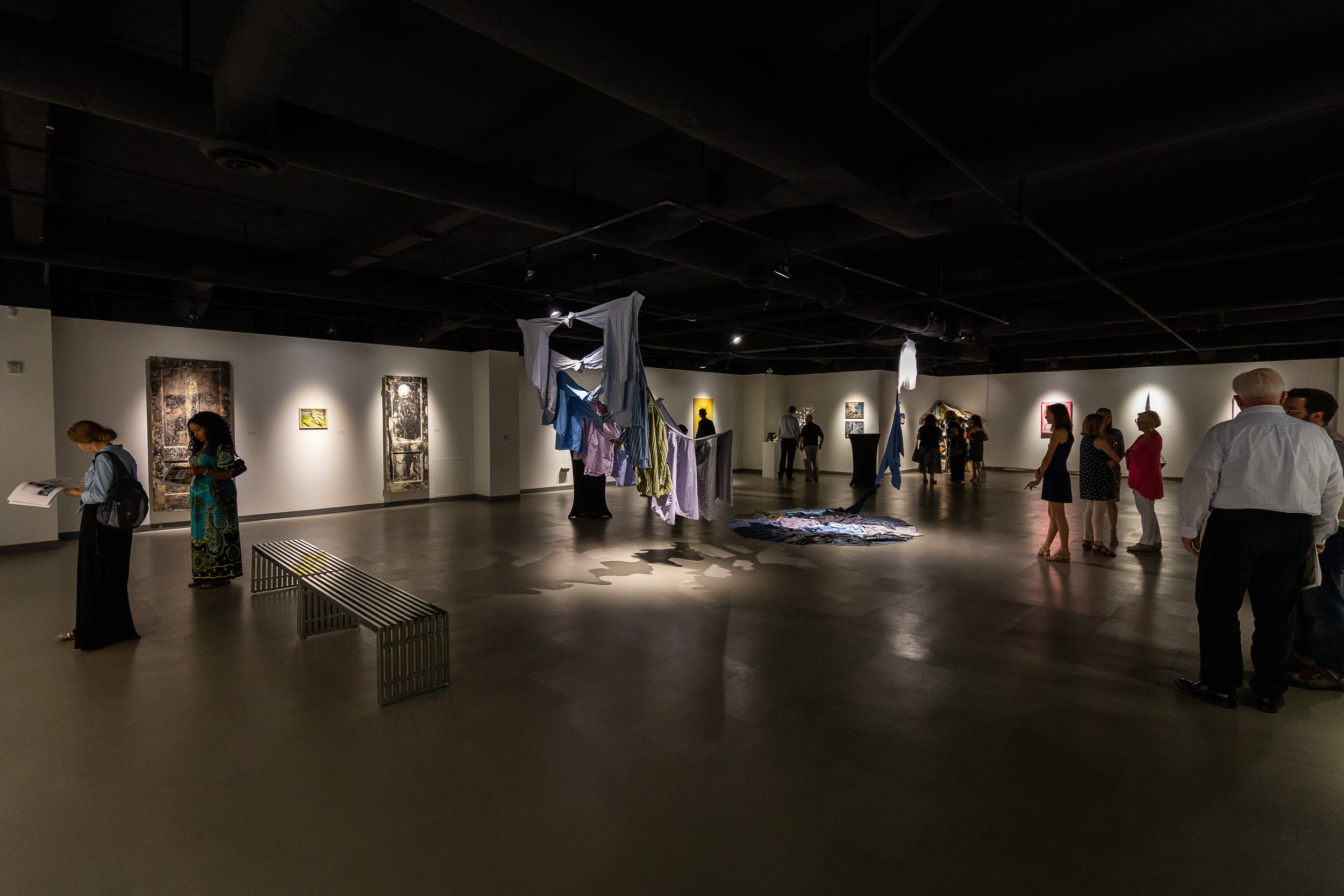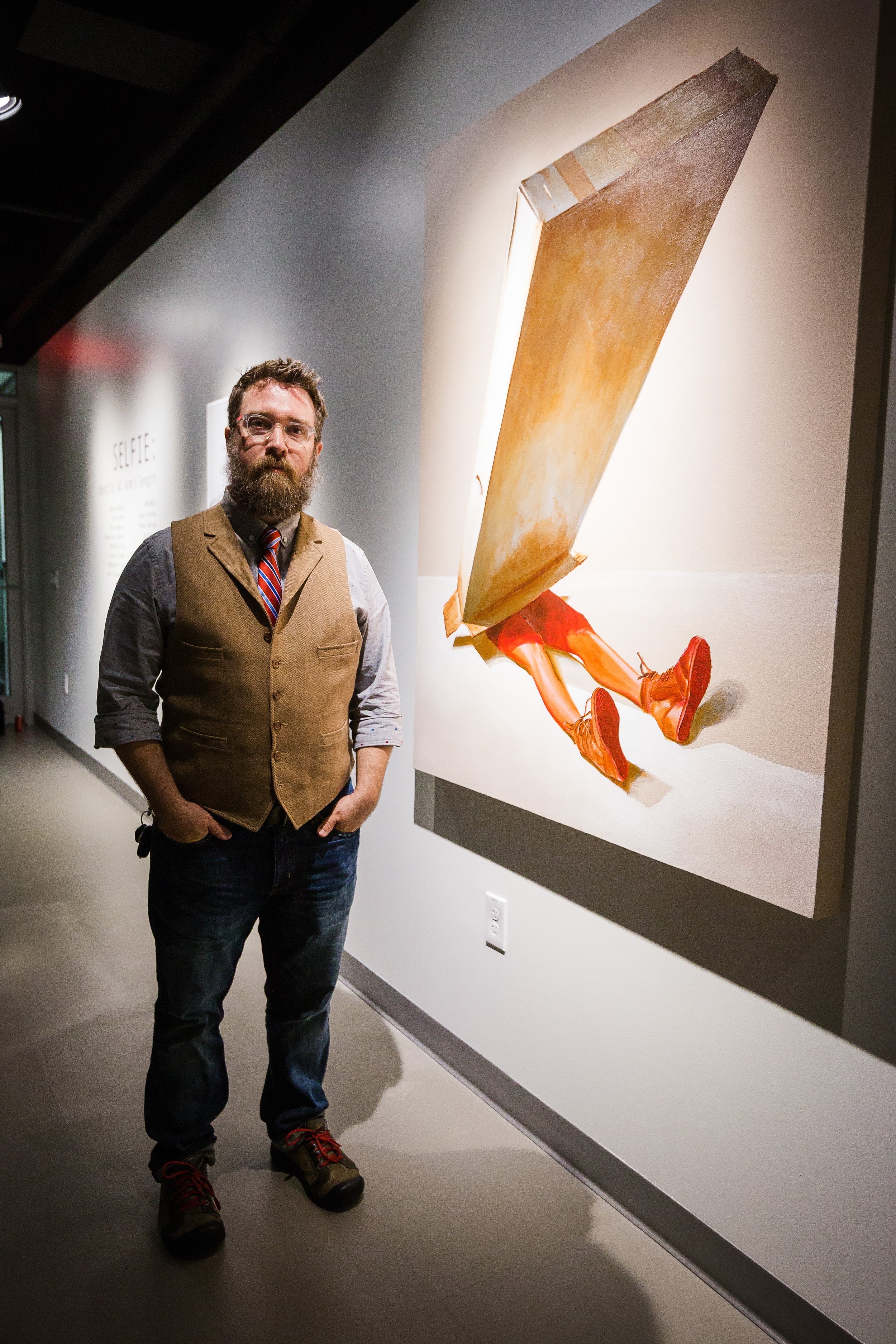
Selfie
Identity at Arms Length
ARTISTS
CRAIG HAWKINS ANGELA BORTONE EVAN JONES
MICHAEL DILLON MATTHEW PHILLIPS WILLIAM MASSEY
JEN DEPLOUR
ROSE SMITH
THE SELFIE IS NOT GOING AWAY. I scrolled past thirty this morning over breakfast. It is a form we seem both to perpetuate and to put down. It is banal, unoriginal, narcissistic. It is also convenient, expressive, and readily “liked.” This exhibit began with an interest in the selfie as identity held at arm’s length. It also held a sense that artists have long been at work closing this distance, long before Kim Kardashian laid claim to inventing the cultural phenomenon. “Painting is self-discovery,” wrote Jackson Pollock. “Every good artist paints what he is.” I asked 16 Atlanta artists how their work engages identity—whether their own or the identity of a community, race, or social group. Artist Hasani Sahlehe, his own work an excavation of culture, offered curatorial guidance and helped identify Atlanta artists working intentionally within various themes of identity. “Our stories are so fundamental to us that it’s easy to forget that we choose them,” says a character in Jonathan Safran Foer’s Here I Am. Atlanta artist Joe Dreher, known and loved as JOEKINGATL, said something similar to me at the onset of this exhibition. “I have all these shirts from another lifetime,” he said. “I don’t know why I have held onto them for so long. But I want to transform them into a physical representation of my past self.” From ephemeral, site-specific works intended only to survive the life of this exhibit to sculpture of solid iron that seems to resist the very concept of human fragility, Selfie tells stories that matter to artists in Atlanta—and to the humans who view their work. Many of the artists in this exhibit explore the identity of grief in its many faces: the roles of women, the stereotyping of tomboys, the weight of abuse and violence, the reality of death. Antonio Darden’s relevant “All the Best” series whimsically raises questions about our cultural celebration of celebrities, while paradoxically reframing questions about race, gender, and superiority. Angela Bortone asks whether self-portraiture can become an act of reconciliation. William Massey, Haylee Anne, Matthew Phillips, and others here, document transformation, found objects and found identity, something made new even in death. Art has a way of closing in, inquiring, inviting, demonstrating face to face. Transfiguration, to borrow Angela Johnson Davis’s title, doesn’t work at arm’s length.








Beautiful.
An Exploration of Portraiture
in Multiple Media
More curations being added soon…